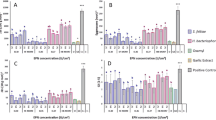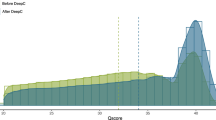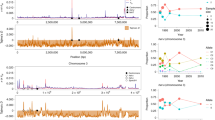Abstract
TYLER1, following the observations of Byars2 and Gabriel3, conducted an experiment to determine whether the root-knot nematode, Heterodera marioni (Cornu) (now Meloidogyne sp.), could reproduce in the absence of males. Lines were maintained from isolated females through as many as twelve generations. Since Heterodera and Meloidogyne are closely related genera of the subfamily Heteroderinae, the possibility of such reproduction (parthenogenesis or syngonism) occurring in the potato-root eelworm, Heterodera rostochiensis Woll., was investigated.
This is a preview of subscription content, access via your institution
Access options
Subscribe to this journal
Receive 51 print issues and online access
$199.00 per year
only $3.90 per issue
Buy this article
- Purchase on SpringerLink
- Instant access to full article PDF
Prices may be subject to local taxes which are calculated during checkout
Similar content being viewed by others
References
Tyler, J., Hilgardia, 7 (10), 373 (1933).
Byars, L. P., Phytopath., 4, 323 (1914).
Gabriel, C., C.R. Soc. Biol., Paris, 95, 497 (1926).
Fassuliotis, G., Phytopath., 47 (1), 11 (1957) (abstract).
Ellenby, C., Nematologica, 2 (3), 250 (1957).
Author information
Authors and Affiliations
Rights and permissions
About this article
Cite this article
WILLIAMS, T. Development of Isolated Female Larvæ of the Potato-Root Eelworm (Heterodera rostochiensis Woll.). Nature 180, 1000 (1957). https://doi.org/10.1038/1801000a0
Issue Date:
DOI: https://doi.org/10.1038/1801000a0
This article is cited by
-
The development of females of the potato root eelworm, (Heterodera rostochiensis Woll.) on ‘tuber-pieces’ of susceptible and resistant potatoes
Euphytica (1963)
-
Anatomische Untersuchungen über die Reaktion von Organen der Kartoffelpflanze auf Befall durch den NematodenHeterodera rostochiensis Woll
Die Kulturpflanze (1962)
-
Observations on the development of potato root eelworm,Heterodera Rostochiensis woll., on the potato tuber and the importance of such development in the spread of this nematode on washed tubers
European Potato Journal (1960)



